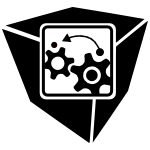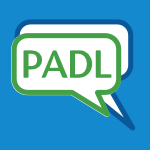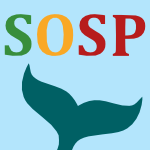68 papers:
 ITiCSE-2015-InsaS #assessment #automation #domain-specific language #java #library
ITiCSE-2015-InsaS #assessment #automation #domain-specific language #java #library- Semi-Automatic Assessment of Unrestrained Java Code: A Library, a DSL, and a Workbench to Assess Exams and Exercises (DI, JS), pp. 39–44.
 ITiCSE-2015-Pritchard #named #online
ITiCSE-2015-Pritchard #named #online- Websheets: A Templated Online Coding Exercise System (DAGP), p. 335.
 CHI-2015-KimGMM #interactive #multi #named
CHI-2015-KimGMM #interactive #multi #named- RIMES: Embedding Interactive Multimedia Exercises in Lecture Videos (JK, ELG, AMH, MRM), pp. 1535–1544.
 CHI-2015-PatelO
CHI-2015-PatelO- Contextual Influences on the Use and Non-Use of Digital Technology While Exercising at the Gym (MP, AAO), pp. 2923–2932.
 CHI-2015-TangYBJT #feedback #visual notation
CHI-2015-TangYBJT #feedback #visual notation- Physio@Home: Exploring Visual Guidance and Feedback Techniques for Physiotherapy Exercises (RT, XDY, SB, JAJ, AT), pp. 4123–4132.
 HCI-IT-2015-GohR #effectiveness #gamification #question
HCI-IT-2015-GohR #effectiveness #gamification #question- Is Gamification Effective in Motivating Exercise? (DHLG, KR), pp. 608–617.
 ITiCSE-2014-StrieweG14a #runtime #using
ITiCSE-2014-StrieweG14a #runtime #using- Code reading exercises using run time traces (MS, MG), p. 346.
 CHI-2014-MorrisSGK #named #smarttech #using
CHI-2014-MorrisSGK #named #smarttech #using- RecoFit: using a wearable sensor to find, recognize, and count repetitive exercises (DM, TSS, AG, IK), pp. 3225–3234.
 CHI-2014-ZaczynskiW #design #game studies #guidelines #interactive
CHI-2014-ZaczynskiW #design #game studies #guidelines #interactive- Establishing design guidelines in interactive exercise gaming: preliminary data from two posing studies (MZ, ADW), pp. 1875–1884.
 HCI-AS-2014-SatoYSR #collaboration
HCI-AS-2014-SatoYSR #collaboration- Collaborative Digital Sports Systems That Encourage Exercise (AS, AY, IS, JR), pp. 332–340.
 SCSM-2014-FardounAG #community #education
SCSM-2014-FardounAG #community #education- Useful Educational Exercises for the Community (HMF, DMA, LCG), pp. 314–321.
 SIGIR-2014-CulpepperMSS #named #topic
SIGIR-2014-CulpepperMSS #named #topic- TREC: topic engineering exercise (JSC, SM, MS, FS), pp. 1147–1150.
 CASE-2013-JunKZRK #automation
CASE-2013-JunKZRK #automation- Automation for individualization of Kinect-based quantitative progressive exercise regimen (SkJ, SK, XZ, DKR, VNK), pp. 243–248.
 ITiCSE-2013-KyrilovN #assessment #automation #first-order #information management #logic #representation
ITiCSE-2013-KyrilovN #assessment #automation #first-order #information management #logic #representation- Automatic formative assessment of exercises on knowledge representation in first-order logic (AK, DCN), p. 343.
 CHI-2013-AnanthanarayanSCPS #smarttech #towards #visualisation
CHI-2013-AnanthanarayanSCPS #smarttech #towards #visualisation- Pt Viz: towards a wearable device for visualizing knee rehabilitation exercises (SA, MS, AC, HP, KAS), pp. 1247–1250.
 DUXU-CXC-2013-Rughinis #bibliography #collaboration #gamification
DUXU-CXC-2013-Rughinis #bibliography #collaboration #gamification- Work and Gameplay in the Transparent “Magic Circle” of Gamification — Insights from a Gameful Collaborative Review Exercise (RR), pp. 577–586.
 HCI-AS-2013-JohnsonOVYP #adaptation
HCI-AS-2013-JohnsonOVYP #adaptation- Examining the Role of Contextual Exercises and Adaptive Expertise on CAD Model Creation Procedures (MDJ, EO, LV, BY, XP), pp. 408–417.
 HIMI-HSM-2013-Wesugi #approach #design #experience #novel #simulation
HIMI-HSM-2013-Wesugi #approach #design #experience #novel #simulation- Design Approach of Simulation Exercise with Use of Device and Its Significance — Design of Novel Device for Realistic Experience of Being a Hemiplegia Patient (SW), pp. 315–324.
 ICEIS-v2-2013-SiepermannSL
ICEIS-v2-2013-SiepermannSL- Electronic Exercises for the Metra Potential Method (MS, CS, RL), pp. 435–442.
 ITiCSE-2012-QueirosL #education #named #programming
ITiCSE-2012-QueirosL #education #named #programming- PETCHA: a programming exercises teaching assistant (RAPQ, JPL), pp. 192–197.
 CSCW-2012-ParkYCPS #game studies #social
CSCW-2012-ParkYCPS #game studies #social- Transforming solitary exercises into social exergames (TP, CY, SPC, BP, JS), pp. 863–866.
 CAV-2012-HasuoS #hybrid #standard #static analysis
CAV-2012-HasuoS #hybrid #standard #static analysis- Exercises in Nonstandard Static Analysis of Hybrid Systems (IH, KS), pp. 462–478.
 DAC-2011-AdirGLNSSZ #concurrent #multi #named #thread
DAC-2011-AdirGLNSSZ #concurrent #multi #named #thread- Threadmill: a post-silicon exerciser for multi-threaded processors (AA, MG, SL, AN, GS, VS, AZ), pp. 860–865.
 ITiCSE-2011-RosslingMS #algorithm #animation #automation #named
ITiCSE-2011-RosslingMS #algorithm #animation #automation #named- AnimalSense: combining automated exercise evaluations with algorithm animations (GR, MM, JS), pp. 298–302.
 HIMI-v2-2011-IkegamiIIO #development #game studies #visual notation
HIMI-v2-2011-IkegamiIIO #development #game studies #visual notation- Development of a Tracking Sound Game for Exercise Support of Visually Impaired (YI, KI, HI, MO), pp. 31–35.
 ITiCSE-2010-AhmadzadehS #eclipse #java #named #plugin #student
ITiCSE-2010-AhmadzadehS #eclipse #java #named #plugin #student- JavaMarker: an eclipse plug-in to mark students’ Java exercises (MA, MS), p. 324.
 ITiCSE-2010-BorstlerDRTHW #modelling #uml
ITiCSE-2010-BorstlerDRTHW #modelling #uml- Sharing and discussing UML modeling exercises in a PLE (JB, DD, ER, ST, MH, SW), p. 301.
 ITiCSE-2010-KaravirtaI #assessment #automation #javascript
ITiCSE-2010-KaravirtaI #assessment #automation #javascript- Serverless automatic assessment of Javascript exercises (VK, PI), p. 303.
 SOFTVIS-2010-HelminenM #named #programming #python #visualisation
SOFTVIS-2010-HelminenM #named #programming #python #visualisation- Jype — a program visualization and programming exercise tool for Python (JH, LM), pp. 153–162.
 CSEET-2009-DemuthW #modelling #re-engineering #scalability #web
CSEET-2009-DemuthW #modelling #re-engineering #scalability #web- Web Based Software Modeling Exercises in Large-Scale Software Engineering Courses (BD, DW), pp. 138–141.
 ITiCSE-2009-Blaheta
ITiCSE-2009-Blaheta- Democracy in the classroom: an exercise for the first days of CS1 (DB), pp. 36–39.
 CHI-2009-WuRT #requirements #social
CHI-2009-WuRT #requirements #social- An exploration of social requirements for exercise group formation (MW, AR, KNT), pp. 79–82.
 DHM-2009-ThomasDAS #evaluation #personalisation
DHM-2009-ThomasDAS #evaluation #personalisation- Non-intrusive Personalized Mental Workload Evaluation for Exercise Intensity Measure (NLT, YD, TA, JHS), pp. 315–322.
 HCI-NT-2009-Rebolledo-MendezDMVFLG #assessment #detection #usability
HCI-NT-2009-Rebolledo-MendezDMVFLG #assessment #detection #usability- Assessing NeuroSky’s Usability to Detect Attention Levels in an Assessment Exercise (GRM, ID, EMM, MDVC, SdF, FL, ARGG), pp. 149–158.
 ICEIS-J-2009-SiepermannS #automation #generative
ICEIS-J-2009-SiepermannS #automation #generative- e-Learning in Logistics Cost Accounting Automatic Generation and Marking of Exercises (MS, CS), pp. 665–676.
 KDIR-2009-ZhouZK #collaboration #learning
KDIR-2009-ZhouZK #collaboration #learning- The Collaborative Learning Agent (CLA) in Trident Warrior 08 Exercise (CZ, YZ, CK), pp. 323–328.
 RE-2009-Breaux #approach #requirements
RE-2009-Breaux #approach #requirements- Exercising Due Diligence in Legal Requirements Acquisition: A Tool-supported, Frame-Based Approach (TDB), pp. 225–230.
 ASE-2008-KollmannG #specification #static analysis #student
ASE-2008-KollmannG #specification #static analysis #student- A Specification Language for Static Analysis of Student Exercises (CK, MG), pp. 355–358.
 ITiCSE-2008-RosslingH #named #online #programming
ITiCSE-2008-RosslingH #named #online #programming- WebTasks: online programming exercises made easy (GR, SH), p. 363.
 CHI-2008-LeongHV #named #question
CHI-2008-LeongHV #named #question- Choice: abidcating or exercising? (TWL, SH, FV), pp. 715–724.
 ITiCSE-2007-Koppelman
ITiCSE-2007-Koppelman- Exercises as a tool for sharing pedagogical knowledge (HK), p. 361.
 HIMI-IIE-2007-ItoMN #communication #design #development
HIMI-IIE-2007-ItoMN #communication #design #development- Design and Development of Computer-Based Discussion Support Tool for Science and Technology Communication Exercise (KI, EM, SN), pp. 356–363.
 ITiCSE-2006-Erlinger #network
ITiCSE-2006-Erlinger #network- Lab exercises for computer networking courses (ME), p. 305.
 RE-2006-BushN #requirements #research
RE-2006-BushN #requirements #research- Requirements Engineering Research in Some Future Worlds: An Exercise in Scenario Planning (DB, BN), p. 324.
 ICSE-2005-ErnstC #specification
ICSE-2005-ErnstC #specification- The groupthink specification exercise (MDE, JC), pp. 617–618.
 ICSE-2005-LeonMP #data flow #empirical #evaluation #testing
ICSE-2005-LeonMP #data flow #empirical #evaluation #testing- An empirical evaluation of test case filtering techniques based on exercising complex information flows (DL, WM, AP), pp. 412–421.
 ITiCSE-2003-YongH #automation #personalisation #student
ITiCSE-2003-YongH #automation #personalisation #student- Automatically creating personalised exercises based on student profiles (CFY, CH), p. 236.
 PADL-2003-TomasL #generative
PADL-2003-TomasL #generative- A CLP-Based Tool for Computer Aided Generation and Solving of Maths Exercises (APT, JPL), pp. 223–240.
 ITiCSE-2002-KorhonenMMS #difference #question #student #web
ITiCSE-2002-KorhonenMMS #difference #question #student #web- Does it make a difference if students exercise on the web or in the classroom? (AK, LM, PM, PS), pp. 121–124.
 PPDP-2002-PembeciNH #domain-specific language #functional #integration
PPDP-2002-PembeciNH #domain-specific language #functional #integration- Functional reactive robotics: an exercise in principled integration of domain-specific languages (IP, HN, GDH), pp. 168–179.
 ITiCSE-2001-CarboneHMG #learning #programming
ITiCSE-2001-CarboneHMG #learning #programming- Characteristics of programming exercises that lead to poor learning tendencies: Part II (AC, JH, IM, DG), pp. 93–96.
 ITiCSE-2001-Gregorio-RodriguezDPPMV #automation #named #programming #web
ITiCSE-2001-Gregorio-RodriguezDPPMV #automation #named #programming #web- EXercita: automatic web publishing of programming exercises (CGR, LFLD, PPG, CPF, RMU, JÁVI), pp. 161–164.
 ITiCSE-2001-SaikkonenMK #assessment #automation #programming
ITiCSE-2001-SaikkonenMK #assessment #automation #programming- Fully automatic assessment of programming exercises (RS, LM, AK), pp. 133–136.
 HT-2000-FischerS #adaptation #automation #hypermedia #learning
HT-2000-FischerS #adaptation #automation #hypermedia #learning- Automatic creation of exercises in adaptive hypermedia learning systems (SF, RS), pp. 49–55.
 ICFP-2000-Okasaki #algorithm #design #lessons learnt
ICFP-2000-Okasaki #algorithm #design #lessons learnt- Breadth-first numbering: lessons from a small exercise in algorithm design (CO), pp. 131–136.
 PODS-1999-ChuHS #optimisation #query
PODS-1999-ChuHS #optimisation #query- Least Expected Cost Query Optimization: An Exercise in Utility (FCC, JYH, PS), pp. 138–147.
 ITiCSE-1999-Szejko #quality
ITiCSE-1999-Szejko #quality- An exercise in evaluating significance of software quality criteria (SS), p. 199.
 ICML-1997-ReddyT #learning #using
ICML-1997-ReddyT #learning #using- Learning Goal-Decomposition Rules using Exercises (CR, PT), pp. 278–286.
 HPDC-1997-YocumCGL
HPDC-1997-YocumCGL- Cut-Through Delivery in Trapeze: An Exercise in Low-Latency Messaging (KY, JSC, AJG, ARL), pp. 243–252.
 ASF+SDF-1995-KampermanW #compilation #self
ASF+SDF-1995-KampermanW #compilation #self- The New ASF Compiler — An Exercise in Self-Applicability (JFTK, HRW), pp. 271–293.
 INTERCHI-1993-NielsenD #bibliography #comparative #design #parallel
INTERCHI-1993-NielsenD #bibliography #comparative #design #parallel- Comparative design review: an exercise in parallel design (JN, HD), pp. 414–417.
 CHI-1991-HammondBCHMY #design #matrix #modelling
CHI-1991-HammondBCHMY #design #matrix #modelling- Modelling user, system design: results of a scenarios matrix exercise (NH, PJB, JC, MDH, AM, RMY), pp. 377–380.
 DAC-1990-CompasanoB #algorithm #scheduling #synthesis #using
DAC-1990-CompasanoB #algorithm #scheduling #synthesis #using- Synthesis Using Path-Based scheduling: algorithms and Exercises (RC, RAB), pp. 450–455.
 OOPSLA-1989-MinskyR
OOPSLA-1989-MinskyR- Controllable Delegation: An Exercise in Law-Governed Systems (NHM, DR), pp. 371–380.
 LICS-1988-HoareG #correctness #logic
LICS-1988-HoareG #correctness #logic- Partial Correctness of C-MOS Switching Circuits: An Exercise in Applied Logic (CARH, MJCG), pp. 28–36.
 POPL-1987-Jouvelot #abstract interpretation #parallel #semantics
POPL-1987-Jouvelot #abstract interpretation #parallel #semantics- Semantic Parallelization: A Practical Exercise in Abstract Interpretation (PJ), pp. 39–48.
 LFP-1984-Clinger #compilation #semantics
LFP-1984-Clinger #compilation #semantics- The Scheme 311 Compiler: An Exercise in Denotational Semantics (WDC), p. 356–?.
 SOSP-1981-BirrellLNS #distributed #named #summary
SOSP-1981-BirrellLNS #distributed #named #summary- Gravevine: An Exercise in Distributed Computing (summary) (AB, RL, RMN, MDS), pp. 178–179.
 ITiCSE-2015-InsaS #assessment #automation #domain-specific language #java #library
ITiCSE-2015-InsaS #assessment #automation #domain-specific language #java #library ITiCSE-2015-Pritchard #named #online
ITiCSE-2015-Pritchard #named #online CHI-2015-KimGMM #interactive #multi #named
CHI-2015-KimGMM #interactive #multi #named CHI-2015-PatelO
CHI-2015-PatelO CHI-2015-TangYBJT #feedback #visual notation
CHI-2015-TangYBJT #feedback #visual notation HCI-IT-2015-GohR #effectiveness #gamification #question
HCI-IT-2015-GohR #effectiveness #gamification #question ITiCSE-2014-StrieweG14a #runtime #using
ITiCSE-2014-StrieweG14a #runtime #using CHI-2014-MorrisSGK #named #smarttech #using
CHI-2014-MorrisSGK #named #smarttech #using CHI-2014-ZaczynskiW #design #game studies #guidelines #interactive
CHI-2014-ZaczynskiW #design #game studies #guidelines #interactive HCI-AS-2014-SatoYSR #collaboration
HCI-AS-2014-SatoYSR #collaboration SCSM-2014-FardounAG #community #education
SCSM-2014-FardounAG #community #education SIGIR-2014-CulpepperMSS #named #topic
SIGIR-2014-CulpepperMSS #named #topic CASE-2013-JunKZRK #automation
CASE-2013-JunKZRK #automation ITiCSE-2013-KyrilovN #assessment #automation #first-order #information management #logic #representation
ITiCSE-2013-KyrilovN #assessment #automation #first-order #information management #logic #representation CHI-2013-AnanthanarayanSCPS #smarttech #towards #visualisation
CHI-2013-AnanthanarayanSCPS #smarttech #towards #visualisation DUXU-CXC-2013-Rughinis #bibliography #collaboration #gamification
DUXU-CXC-2013-Rughinis #bibliography #collaboration #gamification HCI-AS-2013-JohnsonOVYP #adaptation
HCI-AS-2013-JohnsonOVYP #adaptation HIMI-HSM-2013-Wesugi #approach #design #experience #novel #simulation
HIMI-HSM-2013-Wesugi #approach #design #experience #novel #simulation ICEIS-v2-2013-SiepermannSL
ICEIS-v2-2013-SiepermannSL ITiCSE-2012-QueirosL #education #named #programming
ITiCSE-2012-QueirosL #education #named #programming CSCW-2012-ParkYCPS #game studies #social
CSCW-2012-ParkYCPS #game studies #social CAV-2012-HasuoS #hybrid #standard #static analysis
CAV-2012-HasuoS #hybrid #standard #static analysis DAC-2011-AdirGLNSSZ #concurrent #multi #named #thread
DAC-2011-AdirGLNSSZ #concurrent #multi #named #thread ITiCSE-2011-RosslingMS #algorithm #animation #automation #named
ITiCSE-2011-RosslingMS #algorithm #animation #automation #named HIMI-v2-2011-IkegamiIIO #development #game studies #visual notation
HIMI-v2-2011-IkegamiIIO #development #game studies #visual notation ITiCSE-2010-AhmadzadehS #eclipse #java #named #plugin #student
ITiCSE-2010-AhmadzadehS #eclipse #java #named #plugin #student ITiCSE-2010-BorstlerDRTHW #modelling #uml
ITiCSE-2010-BorstlerDRTHW #modelling #uml ITiCSE-2010-KaravirtaI #assessment #automation #javascript
ITiCSE-2010-KaravirtaI #assessment #automation #javascript SOFTVIS-2010-HelminenM #named #programming #python #visualisation
SOFTVIS-2010-HelminenM #named #programming #python #visualisation CSEET-2009-DemuthW #modelling #re-engineering #scalability #web
CSEET-2009-DemuthW #modelling #re-engineering #scalability #web ITiCSE-2009-Blaheta
ITiCSE-2009-Blaheta CHI-2009-WuRT #requirements #social
CHI-2009-WuRT #requirements #social DHM-2009-ThomasDAS #evaluation #personalisation
DHM-2009-ThomasDAS #evaluation #personalisation HCI-NT-2009-Rebolledo-MendezDMVFLG #assessment #detection #usability
HCI-NT-2009-Rebolledo-MendezDMVFLG #assessment #detection #usability ICEIS-J-2009-SiepermannS #automation #generative
ICEIS-J-2009-SiepermannS #automation #generative KDIR-2009-ZhouZK #collaboration #learning
KDIR-2009-ZhouZK #collaboration #learning RE-2009-Breaux #approach #requirements
RE-2009-Breaux #approach #requirements ASE-2008-KollmannG #specification #static analysis #student
ASE-2008-KollmannG #specification #static analysis #student ITiCSE-2008-RosslingH #named #online #programming
ITiCSE-2008-RosslingH #named #online #programming CHI-2008-LeongHV #named #question
CHI-2008-LeongHV #named #question ITiCSE-2007-Koppelman
ITiCSE-2007-Koppelman HIMI-IIE-2007-ItoMN #communication #design #development
HIMI-IIE-2007-ItoMN #communication #design #development ITiCSE-2006-Erlinger #network
ITiCSE-2006-Erlinger #network RE-2006-BushN #requirements #research
RE-2006-BushN #requirements #research ICSE-2005-ErnstC #specification
ICSE-2005-ErnstC #specification ICSE-2005-LeonMP #data flow #empirical #evaluation #testing
ICSE-2005-LeonMP #data flow #empirical #evaluation #testing ITiCSE-2003-YongH #automation #personalisation #student
ITiCSE-2003-YongH #automation #personalisation #student PADL-2003-TomasL #generative
PADL-2003-TomasL #generative ITiCSE-2002-KorhonenMMS #difference #question #student #web
ITiCSE-2002-KorhonenMMS #difference #question #student #web PPDP-2002-PembeciNH #domain-specific language #functional #integration
PPDP-2002-PembeciNH #domain-specific language #functional #integration ITiCSE-2001-CarboneHMG #learning #programming
ITiCSE-2001-CarboneHMG #learning #programming ITiCSE-2001-Gregorio-RodriguezDPPMV #automation #named #programming #web
ITiCSE-2001-Gregorio-RodriguezDPPMV #automation #named #programming #web ITiCSE-2001-SaikkonenMK #assessment #automation #programming
ITiCSE-2001-SaikkonenMK #assessment #automation #programming HT-2000-FischerS #adaptation #automation #hypermedia #learning
HT-2000-FischerS #adaptation #automation #hypermedia #learning ICFP-2000-Okasaki #algorithm #design #lessons learnt
ICFP-2000-Okasaki #algorithm #design #lessons learnt PODS-1999-ChuHS #optimisation #query
PODS-1999-ChuHS #optimisation #query ITiCSE-1999-Szejko #quality
ITiCSE-1999-Szejko #quality ICML-1997-ReddyT #learning #using
ICML-1997-ReddyT #learning #using HPDC-1997-YocumCGL
HPDC-1997-YocumCGL ASF+SDF-1995-KampermanW #compilation #self
ASF+SDF-1995-KampermanW #compilation #self INTERCHI-1993-NielsenD #bibliography #comparative #design #parallel
INTERCHI-1993-NielsenD #bibliography #comparative #design #parallel CHI-1991-HammondBCHMY #design #matrix #modelling
CHI-1991-HammondBCHMY #design #matrix #modelling DAC-1990-CompasanoB #algorithm #scheduling #synthesis #using
DAC-1990-CompasanoB #algorithm #scheduling #synthesis #using OOPSLA-1989-MinskyR
OOPSLA-1989-MinskyR LICS-1988-HoareG #correctness #logic
LICS-1988-HoareG #correctness #logic POPL-1987-Jouvelot #abstract interpretation #parallel #semantics
POPL-1987-Jouvelot #abstract interpretation #parallel #semantics LFP-1984-Clinger #compilation #semantics
LFP-1984-Clinger #compilation #semantics SOSP-1981-BirrellLNS #distributed #named #summary
SOSP-1981-BirrellLNS #distributed #named #summary









